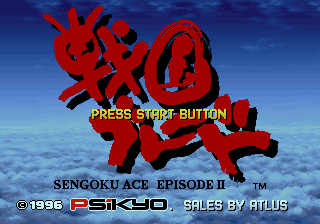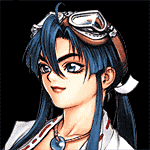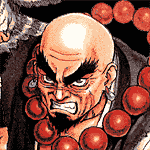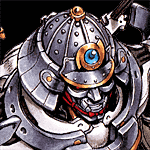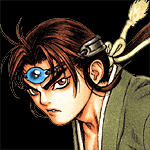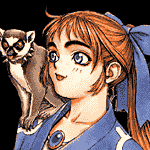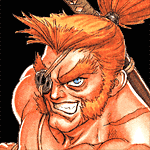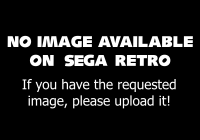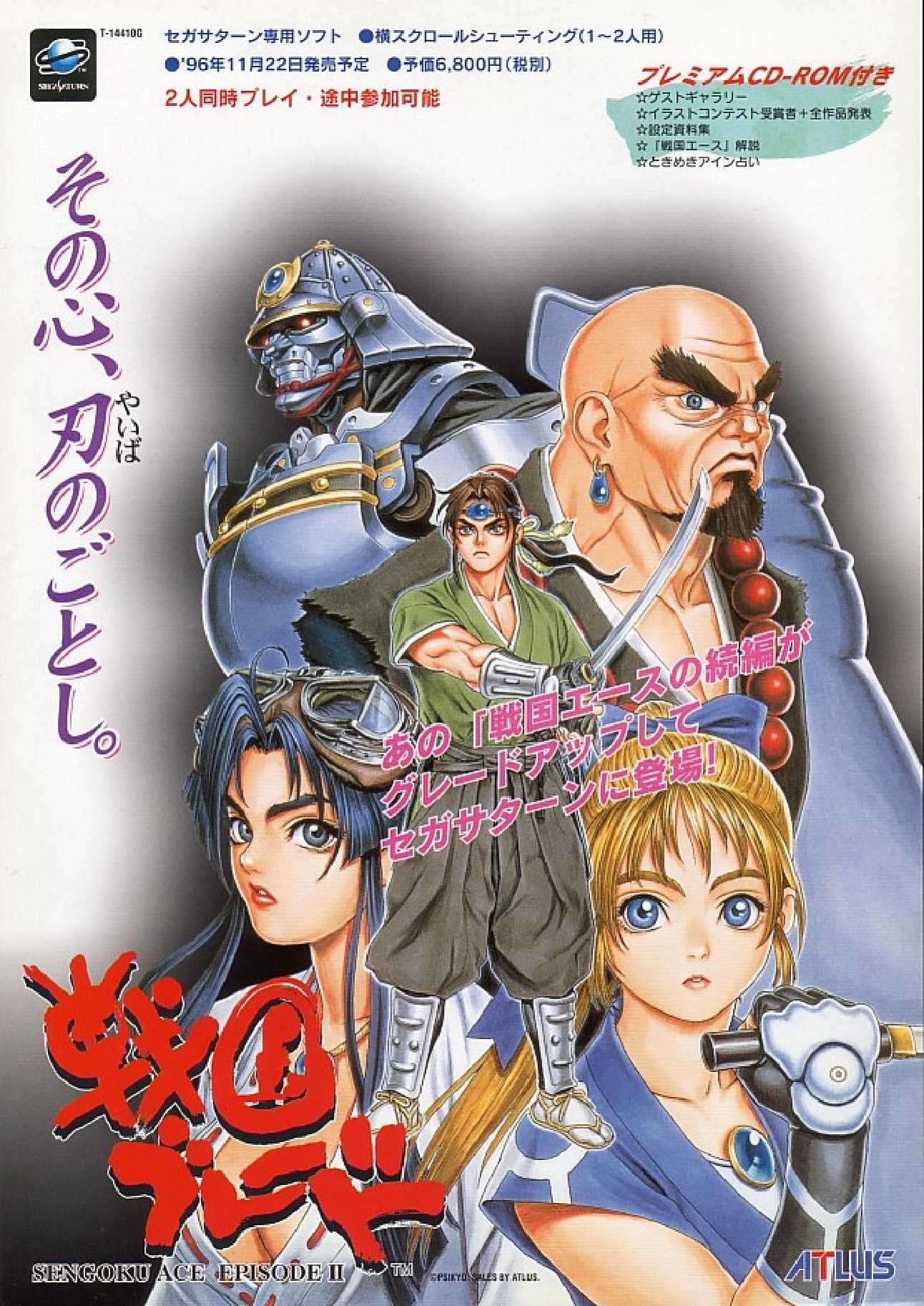Difference between revisions of "Sengoku Blade"
From Sega Retro
| (16 intermediate revisions by 5 users not shown) | |||
| Line 7: | Line 7: | ||
| peripherals= | | peripherals= | ||
| players=1-2 | | players=1-2 | ||
| − | | genre= | + | | genre=Shooting{{fileref|SengokuBlade Saturn JP Box Back.jpg}}{{ref|https://web.archive.org/web/20200320230509/https://sega.jp/fb/segahard/ss/soft_licensee2.html}} |
| − | | | + | | licensor=[[Psikyo]] |
| originalsystem=Arcade boards | | originalsystem=Arcade boards | ||
| releases={{releasesSat | | releases={{releasesSat | ||
| − | | sat_date_jp=1996-11-22 | + | | sat_date_jp=1996-11-22{{ref|https://web.archive.org/web/20200320230509/https://sega.jp/fb/segahard/ss/soft_licensee2.html}} |
| − | | sat_rrp_jp=6, | + | | sat_rrp_jp=6,800e{{fileref|SengokuBlade Saturn JP Flyer.pdf}} |
| sat_code_jp=T-14410G | | sat_code_jp=T-14410G | ||
| + | | sat_rating_jp=all | ||
| + | }} | ||
| + | | otherformats={{NonSega|Arcade}} | ||
| + | | properties={{Properties|SAT|2discs|cinepak}} | ||
| + | }} | ||
| + | {{sub-stub}}'''''{{PAGENAME}}''''' (戦国ブレード) (called ''Tengai'' overseas) is a 1996 arcade shoot-'em-up by [[Psikyo]] brought to the [[Sega Saturn]] in Japan the same year. It is a sequel to the 1993 game, ''Sengoku Ace'', also known as ''Samurai Aces''. | ||
| + | |||
| + | Art of the game is done by Japanese underground artist, Jun Tsukasa who has also worked on other Psikyo games such as ''Sol Divide'', ''Sengoku Cannon'' and ''Taisen Hot Gimmick'' series. | ||
| + | |||
| + | The port comes with a second disc containing an art gallery. | ||
| + | |||
| + | ==Gameplay== | ||
| + | ===Playable Characters=== | ||
| + | {{InfoTable|imagewidths=200| | ||
| + | {{InfoRow | ||
| + | | title=Koyori Togashi, aka "Miko" | ||
| + | | image=SengokuBlade SAT characterportrait Koyori.png | ||
| + | | desc=Well-endowed main character of the game who later became some sort of a mascot for the series. A 19 years old shrine maiden who joins the adventure for fame and fortune. She used to be a bit of greedy but she seems to have grown out of it. She is accompanied by a spirit animal that looks like a horned monkey. | ||
| + | * '''Main Weapon:''' Spread | ||
| + | * '''Secondary Weapon:''' Homing Energy Balls | ||
| + | * '''Charge Weapon:''' Saw Blade | ||
| + | * '''Super Weapon:''' Black Hole Bomb | ||
| + | Fires ofuda charms as main weapon. Secondary weapon fires glowing homing balls that will chase enemies. Charge weapon fires a ball of light that will slowly move across the screen and damage enemies it passes through. It will turn into a sawblade if powered enough. Super weapon is a short ranged bomb that will create a black hole and stop enemy projectiles while also damaging anything passing through it. | ||
| + | }} | ||
| + | {{InfoRow | ||
| + | | title=Tengai | ||
| + | | image=SengokuBlade SAT characterportrait Tengai.png | ||
| + | | desc=A 50 years old loud, rowdy Buddhist monk. He is the main character in the overseas releases, possibly because in the belief that a manly, bald and muscular man would be more popular in the west. | ||
| + | * '''Main Weapon:''' Concentrated | ||
| + | * '''Secondary Weapon:''' Green Bullets | ||
| + | * '''Charge Weapon:''' Bird Strike | ||
| + | * '''Super Weapon:''' Prayer Shout | ||
| + | He uses prayer beads as main projectiles. Secondary weapon fires small green bullets for small damage but better coverage. Charge weapon turn the accompanying bird into a fire bird and makets it fly through enemies. Very small coverage but causes heavy damage and drills through multiple enemies. Super weapon fires Japanese letters in a rapid succession in a straight line. | ||
| + | }} | ||
| + | {{InfoRow | ||
| + | | title=Hagane | ||
| + | | image=SengokuBlade SAT characterportrait Hagane.png | ||
| + | | desc=A suit of Japanese armor inhabited by a human soul. It is revealed in the end that her sould belongs a Japanese woman. | ||
| + | * '''Main Weapon:''' Concentrated | ||
| + | * '''Secondary Weapon:''' Arrows | ||
| + | * '''Charge Weapon:''' Spear Stab | ||
| + | * '''Super Weapon:''' Lightning Rain | ||
| + | Focuses on frontal attack power with very little coverage. Secondary weapons are small arrows fired from accompanying flying spears. Charge weapon makes the spears to stab forward with great damage but short range. Special weapon makes lightning bolts rain down the screen, covering entire screen. | ||
| + | }} | ||
| + | {{InfoRow | ||
| + | | title=Sho | ||
| + | | image=SengokuBlade SAT characterportrait Sho.png | ||
| + | | desc=A young samurai accompanied by flying picture frame which contains the drawing of her late mother who was killed by the demons. He joins the adventure to avenge her mother and rescue the princess he is in love with. | ||
| + | * '''Main Weapon:''' Concentrated | ||
| + | * '''Secondary Weapon:''' Energy Shot | ||
| + | * '''Charge Weapon:''' Stationary Energy Barrage | ||
| + | * '''Super Weapon:''' Sword Storm | ||
| + | Secondary weapon fires somewhat large and powerful shots from the picture frames. Charge weapon makes the frames remain stationary and fire continously with good damage. Super weapon fires dozens of swords across the screen with low damage but covers the entire screen. | ||
| + | }} | ||
| + | {{InfoRow | ||
| + | | title=Junis | ||
| + | | image=SengokuBlade SAT characterportrait Junis.png | ||
| + | | desc=13 years old French girl who is living in Japan and working as a ninja. She wants to find her sister Jane from the first game who was presumed dead at the end of her playthrough. She believes she is still alive somewhere in the villain's castle. She is accompanied by her pet lemur, Socrates. | ||
| + | * '''Main Weapon:''' Spread | ||
| + | * '''Secondary Weapon:''' Cross Pattern Shuriken | ||
| + | * '''Charge Weapon:''' Socrates Fire Breath | ||
| + | * '''Super Weapon:''' Cherry Blossom Storm | ||
| + | Junis has a weird firing pattern. Her kunai shaped main projectiles has some coverage. Her secondary weapons fire shurikens to both upper right and lower right. When fully powered, secondary weapon can also cover upper and lower left at the same time, giving a 4-way shot. Charge weapon makes Socrates remain stationary and breath fire, which causes great damage over time but has a very short range. Super weapon makes Junis dance in the screen and sweep the screen with cherry blossom petals, damaging everything and erasing enemy projectiles. | ||
| + | }} | ||
| + | {{InfoRow | ||
| + | | title=Ain | ||
| + | | image=SengokuBlade SAT characterportrait Ayin.png | ||
| + | | desc=Recurring character of the Psikyo games, a half-naked, loud samurai. Once again he joins the fight to find her sister Asuka. Ain is a secret character in the game. | ||
| + | * '''Main Weapon:''' Concentrated | ||
| + | * '''Secondary Weapon:''' Sword Wave | ||
| + | * '''Charge Weapon:''' Sword Slash | ||
| + | * '''Super Weapon:''' Mirage Sword Rush | ||
| + | Ain has very little coverage for better frontal firepower. Secondary weapon fires crescent shaped projectiles for additional firepower. Charge weapon is a short range sword slash that will cause heavy damage if enemy is in range. Super weapon fires a straight line, piercing projectile, similar to Ain's specials from Sengoku Aces and Strikers 1945. | ||
| + | }} | ||
| + | {{InfoRow | ||
| + | | title=Marion | ||
| + | | image=Notavailable.svg | ||
| + | | desc=Marion from Gunbird series is exclusive to the Saturn version of the game. Her personality and gameplay is as the same as her first Gunbird appearance, except of course she shoots horizontally rather than vertically. | ||
| + | * '''Main Weapon:''' Spread | ||
| + | * '''Secondary Weapon:''' Homing Star Projectiles | ||
| + | * '''Charge Weapon:''' Rabbit Blast | ||
| + | * '''Super Weapon:''' Crescent Storm | ||
| + | Marion has better spread compared to the other characters but has less firepower. Secondary weapons are weak but fast and accurate star shaped projectiles. Charger weapon fires a powerful energy blast. Super weapon fires crescent shaped projectiles across the screen. | ||
}} | }} | ||
| − | |||
}} | }} | ||
| − | |||
==Magazine articles== | ==Magazine articles== | ||
| Line 26: | Line 107: | ||
|{{gitem|SengokuBlade Saturn JP Flyer.pdf|page=1|Flyer}} | |{{gitem|SengokuBlade Saturn JP Flyer.pdf|page=1|Flyer}} | ||
|{{galleryPrintAd | |{{galleryPrintAd | ||
| − | + | |ssmjp|1996-18|231 | |
| − | + | |ssmjp|1996-19|23 | |
}} | }} | ||
| − | |{{galleryPrintAd | + | |{{galleryPrintAd|ssmjp|1996-20|223}} |
| − | |{{galleryPrintAd | + | |{{galleryPrintAd|ssmjp|1996-21|21}} |
| − | |{{galleryPrintAd | + | |{{galleryPrintAd|ssmjp|1996-22|287}} |
}} | }} | ||
==Physical scans== | ==Physical scans== | ||
| − | {{ratings | + | {{ratings|SAT}} |
| − | | | ||
| − | |||
| − | |||
| − | |||
| − | |||
| − | |||
| − | |||
| − | }} | ||
{{Scanbox | {{Scanbox | ||
| console=Saturn | | console=Saturn | ||
| Line 54: | Line 127: | ||
==Technical information== | ==Technical information== | ||
| − | + | {{mainArticle|{{PAGENAME}}/Technical information}} | |
| − | {{ | ||
| − | {{ | ||
| − | |||
| − | }} | ||
==References== | ==References== | ||
<references/> | <references/> | ||
| + | |||
| + | {{SengokuBladeOmni}} | ||
Latest revision as of 12:03, 18 September 2024
| Sengoku Blade | ||||||||||
|---|---|---|---|---|---|---|---|---|---|---|
| System(s): Sega Saturn | ||||||||||
| Publisher: Atlus | ||||||||||
| Developer: Psikyo | ||||||||||
| Licensor: Psikyo | ||||||||||
| Original system(s): Arcade boards | ||||||||||
| Genre: Shooting[1][2] | ||||||||||
| Number of players: 1-2 | ||||||||||
| ||||||||||
|
This teeny-tiny article needs some work. You can help us by expanding it.
Sengoku Blade (戦国ブレード) (called Tengai overseas) is a 1996 arcade shoot-'em-up by Psikyo brought to the Sega Saturn in Japan the same year. It is a sequel to the 1993 game, Sengoku Ace, also known as Samurai Aces.
Art of the game is done by Japanese underground artist, Jun Tsukasa who has also worked on other Psikyo games such as Sol Divide, Sengoku Cannon and Taisen Hot Gimmick series.
The port comes with a second disc containing an art gallery.
Contents
Gameplay
Playable Characters
Magazine articles
- Main article: Sengoku Blade/Magazine articles.
Promotional material
Print advert in Sega Saturn Magazine (JP) #1996-18: "1996-18 (1996-10-25)" (1996-10-11)
also published in:
also published in:
- Sega Saturn Magazine (JP) #1996-19: "1996-19 (1996-11-08)" (1996-10-25)[4]
Print advert in Sega Saturn Magazine (JP) #1996-20: "1996-20 (1996-11-22)" (1996-11-08)
Print advert in Sega Saturn Magazine (JP) #1996-21: "1996-21 (1996-12-13)" (1996-11-22)
Print advert in Sega Saturn Magazine (JP) #1996-22: "1996-22 (1996-12-27)" (1996-12-13)
Physical scans
| Sega Retro Average | |||||||||||||||||||||||||||||||||||||||
|---|---|---|---|---|---|---|---|---|---|---|---|---|---|---|---|---|---|---|---|---|---|---|---|---|---|---|---|---|---|---|---|---|---|---|---|---|---|---|---|
|
| 74 | |
|---|---|
| Based on 7 reviews | |
Technical information
- Main article: Sengoku Blade/Technical information.
References
- ↑ File:SengokuBlade Saturn JP Box Back.jpg
- ↑ 2.0 2.1 https://sega.jp/fb/segahard/ss/soft_licensee2.html (Wayback Machine: 2020-03-20 23:05)
- ↑ File:SengokuBlade Saturn JP Flyer.pdf
- ↑ Sega Saturn Magazine, "1996-19 (1996-11-08)" (JP; 1996-10-25), page 23
- ↑ Ação Games, "Setembro 1998" (BR; 1998-xx-xx), page 45
- ↑ Famitsu, "1996-11-29" (JP; 1996-11-15), page 1
- ↑ MAN!AC, "02/97" (DE; 1997-01-08), page 55
- ↑ Saturn Fan, "1996 No. 24" (JP; 1996-11-15), page 188
- ↑ Saturn Fan, "1997 No. 1" (JP; 1996-12-27), page 70
- ↑ Sega Saturn Magazine, "1996-20 (1996-11-22)" (JP; 1996-11-08), page 216
- ↑ Sega Saturn Magazine, "Readers rating final data" (JP; 2000-03), page 11
| Sengoku Blade | |
|---|---|
|
Main page | Comparisons | Development | Magazine articles | Reception | Technical information
Demos: Sengoku Blade Mihonhin (1996) | |
